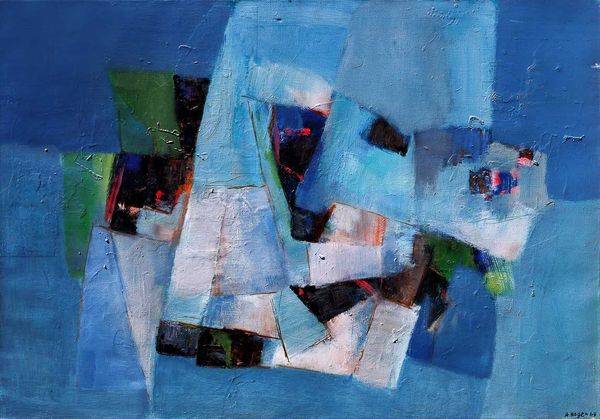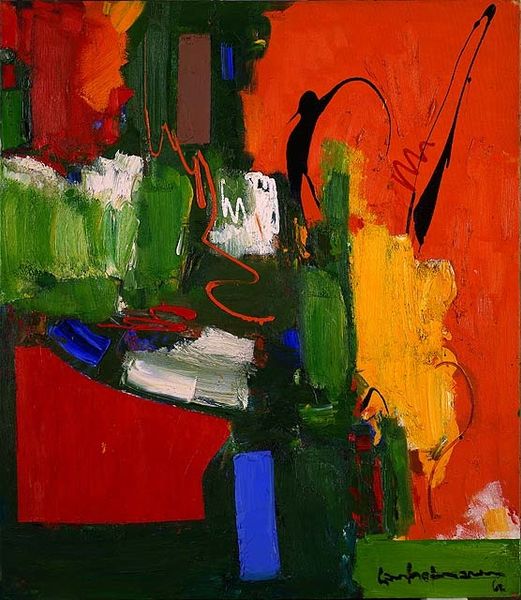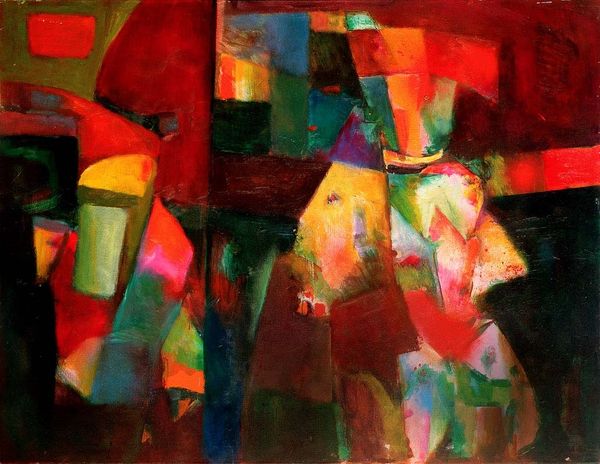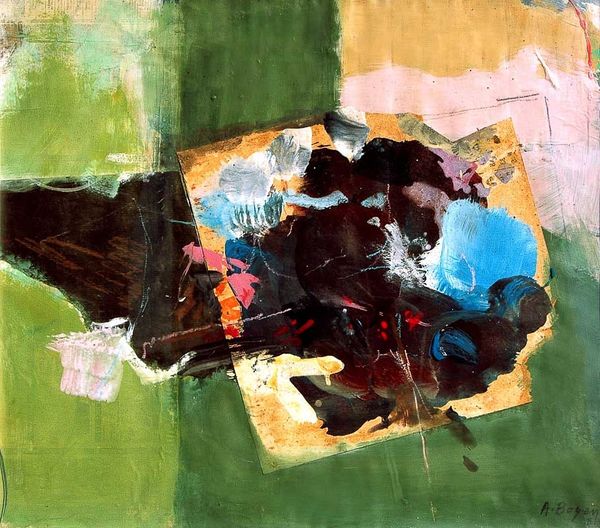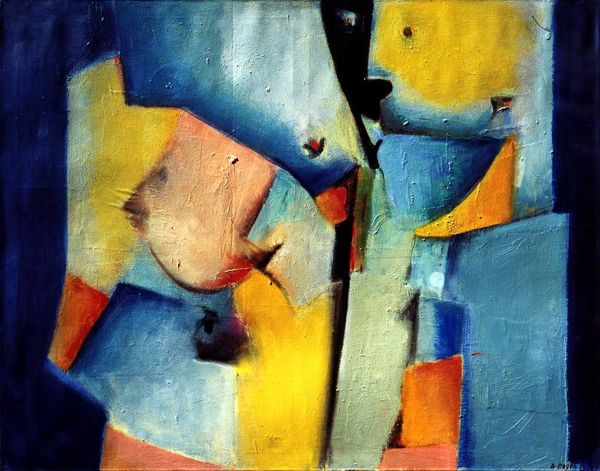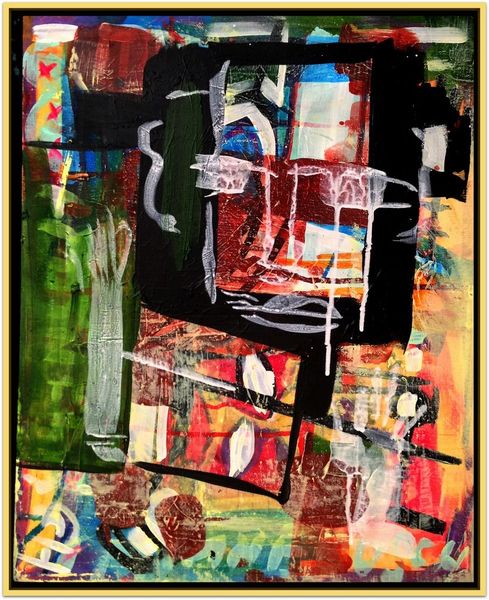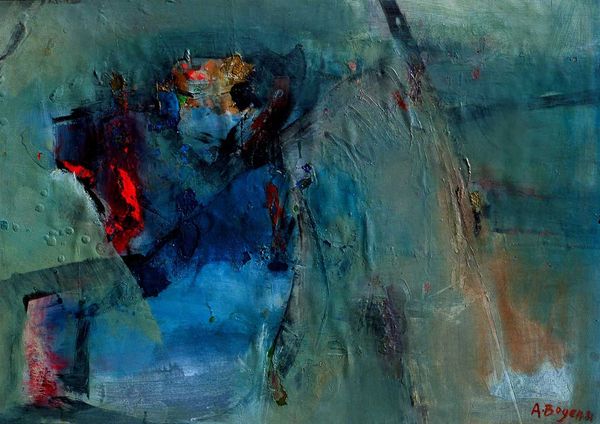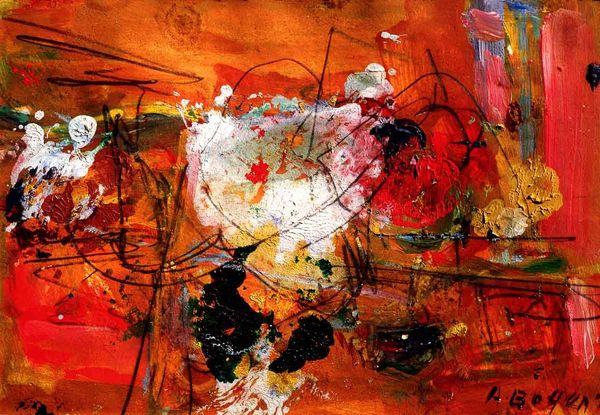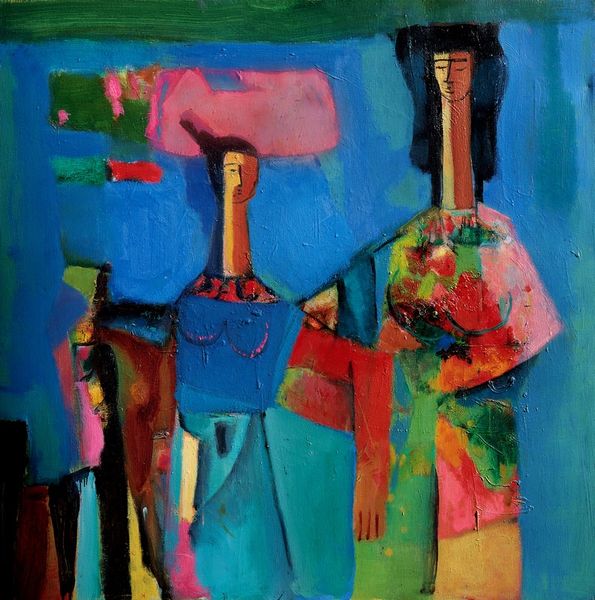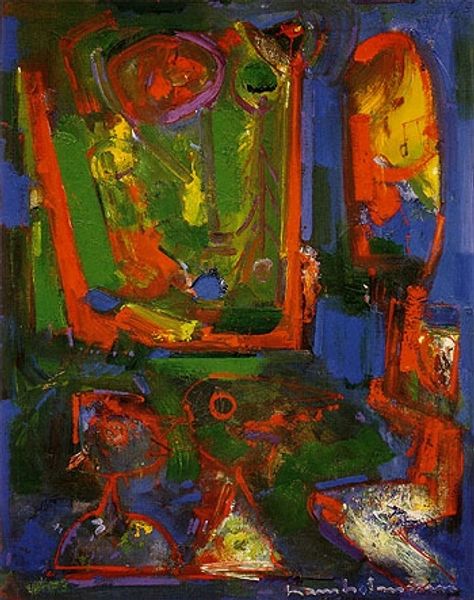
Copyright: Alexander Bogen,Fair Use
Alexander Bogen’s painting embodies the chaotic vibrancy of the Moulin Rouge. At first glance, a vibrant green dominates, a symbol of life, perhaps ironically set against the more frenetic elements within. Notice how the splatters of red break through the calm green, these spots of red evoke primal emotions. We see this color, of course, in the works of the old masters: think of the blood of sacrifice in Caravaggio’s religious scenes or the passionate robes of Titian’s Bacchus. Bogen echoes this deep-seated connection between color and emotion. The chaotic lines and forms are in stark contrast with the dominant color. These lines, like the erratic movements of dancers, stir feelings of unease and exhilaration. This psychological tension is a recurrent theme throughout art history, from the dynamic compositions of Baroque art to the unsettling imagery of Surrealism. Bogen's abstract shapes hint at human forms, faces, and movement. Ultimately, this painting captures a timeless cycle of emotion. The colors and forms create a subconscious reaction in the viewer, a deep-seated recognition of humanity's perpetual dance between order and chaos.
Comments
No comments
Be the first to comment and join the conversation on the ultimate creative platform.
